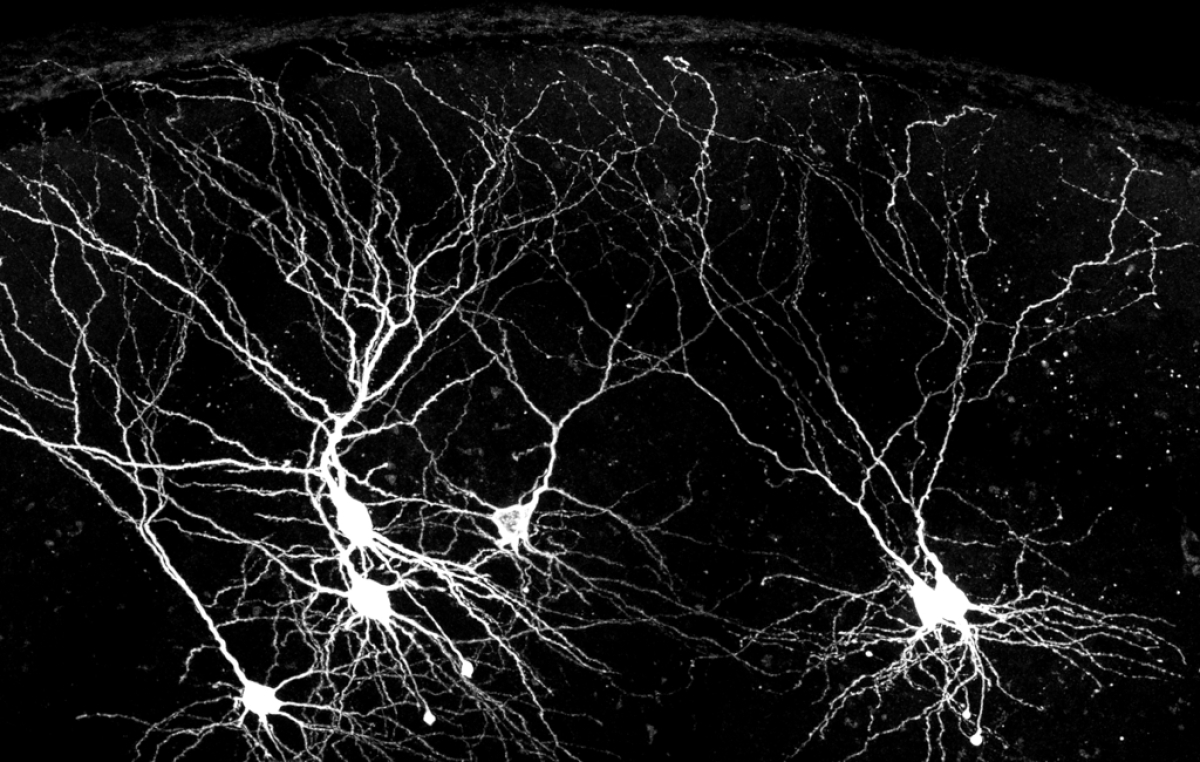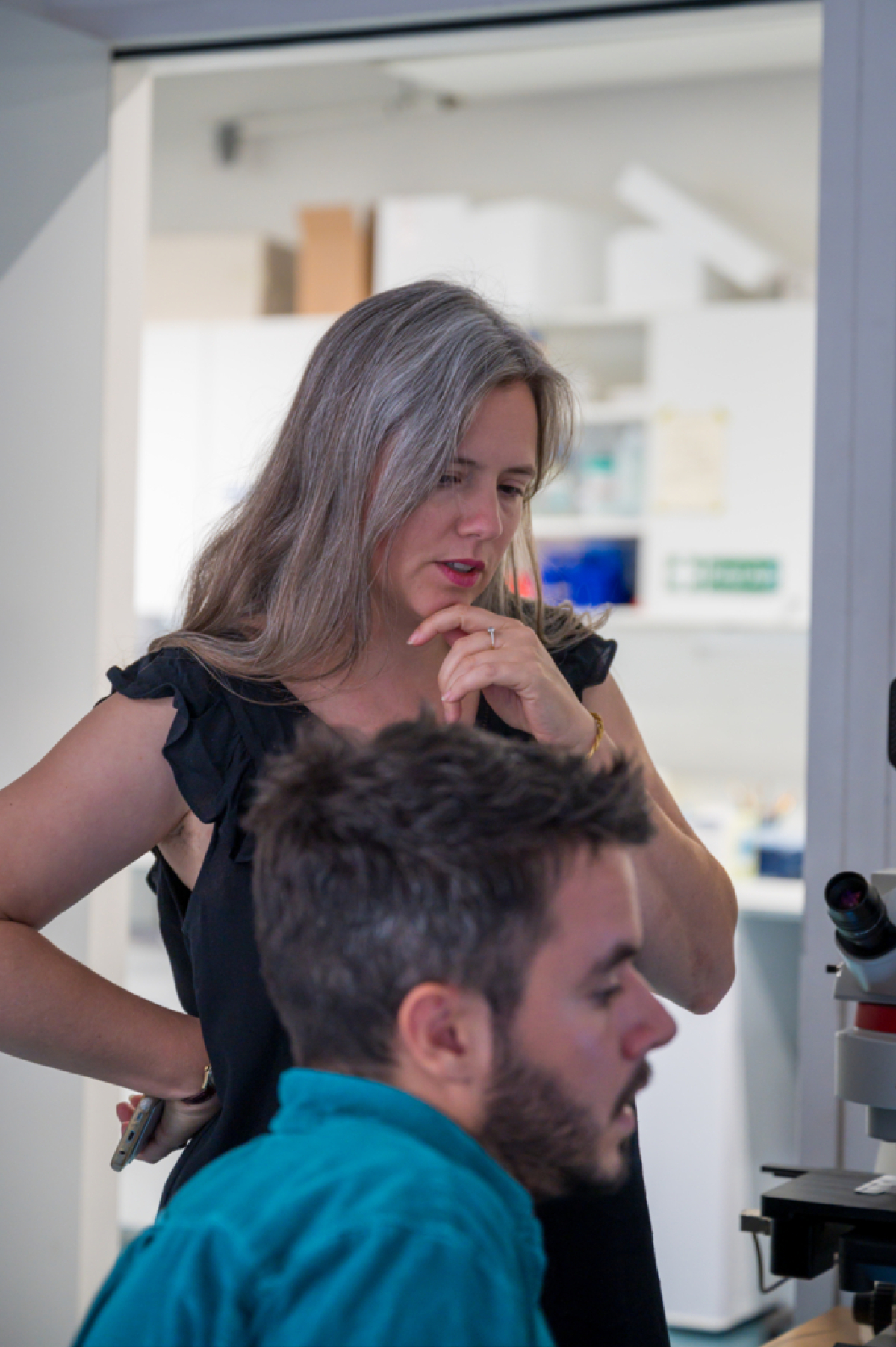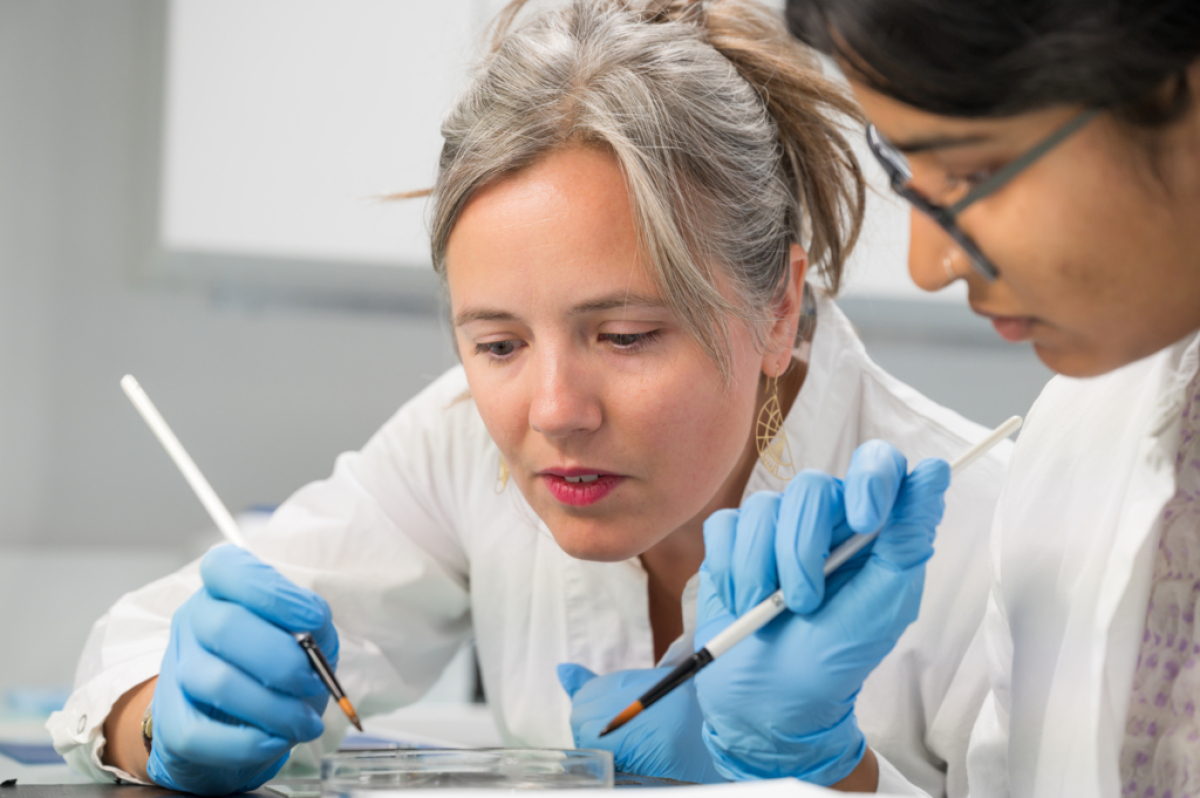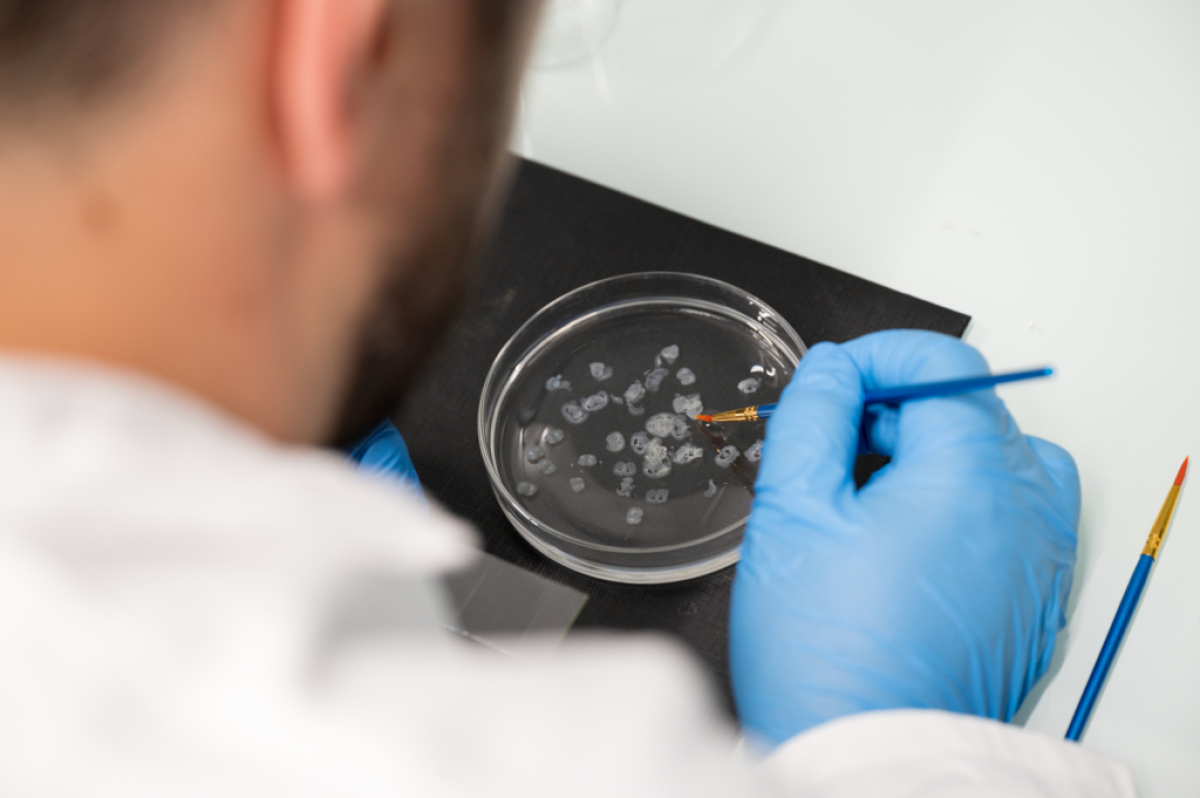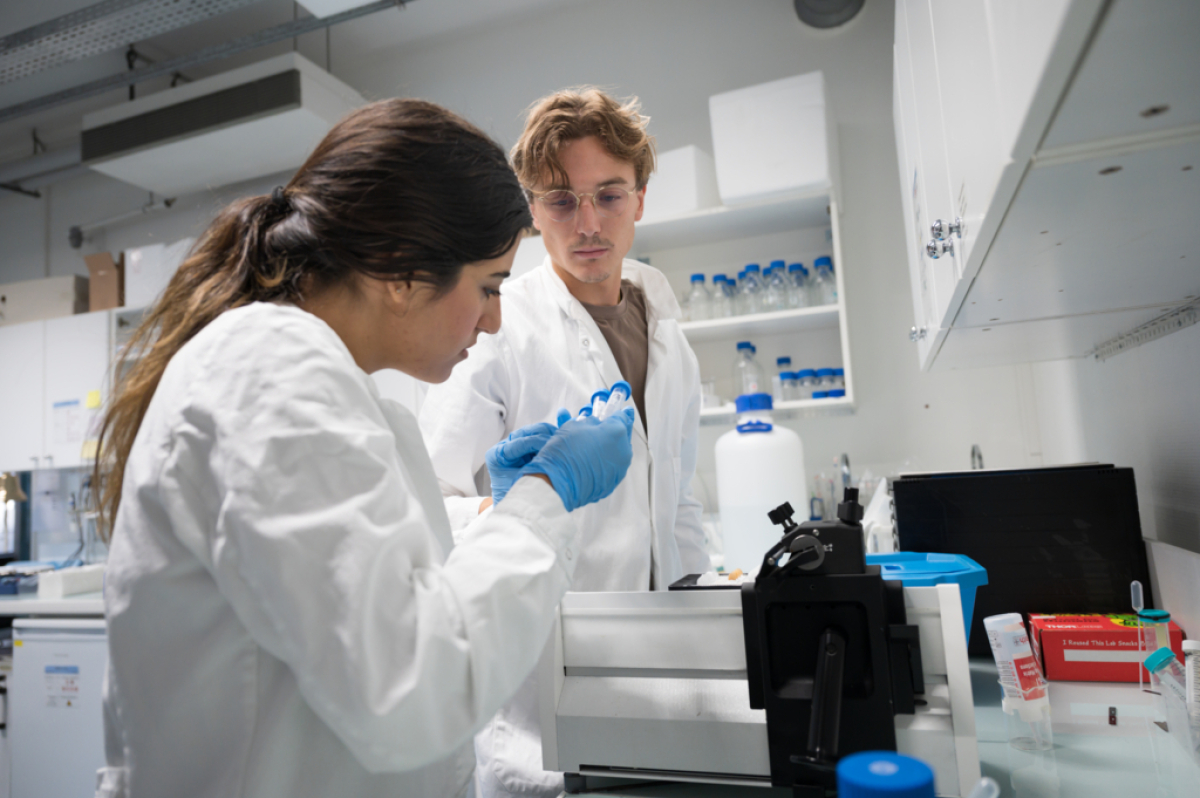Anna Beyeler Understanding anxiety pathways to control it better
Anna Beyeler, Inserm researcher, Head of the "Neural Circuits of Anxiety" team at the Neurocentre Magendie, Bordeaux
- 2023 • Impulscience
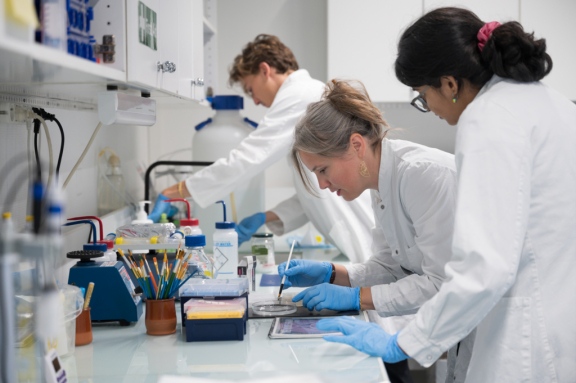
Anxiety is a natural physiological response to danger or stress that guides our everyday behaviour. Over 25% of the population suffers from anxiety at one point or another in life. Anna Beyeler plans to dissect the anatomy and function of the neural networks underlying anxiety and its disorders with the goal of one day being able to regulate them and overcome their harmful effects.
We're not all equal when it comes to anxiety
Anxiety disorder is when a person feels strong, long-lasting anxiety that disrupts daily life but is not related to any real danger or threat. There are many risk factors, including childhood physical and/or emotional trauma, linked to developing this disorder. However, the neurobiology behind the risk of developing anxiety remains a mystery. As a result, available treatments are limited and have side effects as their mode of action is not yet fully understood. The most often used treatments target the cerebral serotonergic system, which produces the neurotransmitter serotonin and distributes it to many areas of the brain, where it regulates the activity of neurons. It is a key, very powerful system to maintain the balance of brain functions, including anxiety control.
Serotonin: a suspect to keep an eye on
Failures in serotonergic transmission in several parts of the brain have been observed in patients with anxiety disorders. These clinical observations suggest a link between serotonin and anxiety, but Anna Beyeler wants to find iron-clad proof.
With her team at Neurocentre Magendie, she is focusing on the brain's main source of serotonin, the dorsal raphe nucleus, and the areas that receive it, including the limbic circuits that control emotions. Cutting-edge neuroscience technologies will enable researchers to understand the contribution of serotonin and limbic circuits to anxiety disorders in mice.
Understanding the neural circuits of anxiety
To carry out this project funded by Impulscience®, the team will develop a robust procedure for assessing anxiety in rodents. They will combine physiological measurements (heart rate, temperature, shivering) with analysis of anxiety-like behaviour. These behaviours are quantified by multiple measurements including time spent in protected versus exposed locations, and fine-tuned measurements of behaviour detected using an artificial intelligence algorithm. With unprecedented resolution, the researchers will identify the signs of low or high anxiety in mice, allowing them to take each individual’s variability and vulnerability into account.
These new approaches will provide answers to many fundamental questions, including:
- Are serotonergic circuits the same in resilient and anxiety-prone individuals?
- How can a risk factor like early-life stress change brain circuits?
- Can physiological anxiety levels in vulnerable individuals be restored by manipulating serotonergic circuits?
This vast program will offer a new understanding of the factors controlling anxiety levels between individuals while providing hope for finding out how therapies targeting the serotonin system work in the treatment of anxiety disorders.
Anna Beyeler in a few words
Anna Beyeler has been interested in neural circuits since the beginning of her career. During her PhD at the University of Bordeaux, she observed changes in the Xenopus laevis frog’s locomotor system during metamorphosis. During her first post-doctorate in Bordeaux, she measured the activity of neural networks in the hippocampus, a part of the brain involved in memory and spatial orientation. In 2012, she moved to Cambridge, Massachusetts for her second post-doctorate, to decipher the neural networks involved in assigning value (positive or negative) to the sensory information that guides our behaviour. In 2017, she set up her own team at the Neurocentre Magendie, an Inserm institute based in Bordeaux, to identify changes in the neuronal circuits that control anxiety in mice.

Impulscience
Impulscience allocates 7 new grants each year to researchers in the life sciences. Focused on the mid-career, this program aims to support this crucial stage for the development of research projects.
All the award-winnersCall for applications
Submission of applications opens on Wednesday March 20, 2024 and closes on Thursday May 2, 2024.
